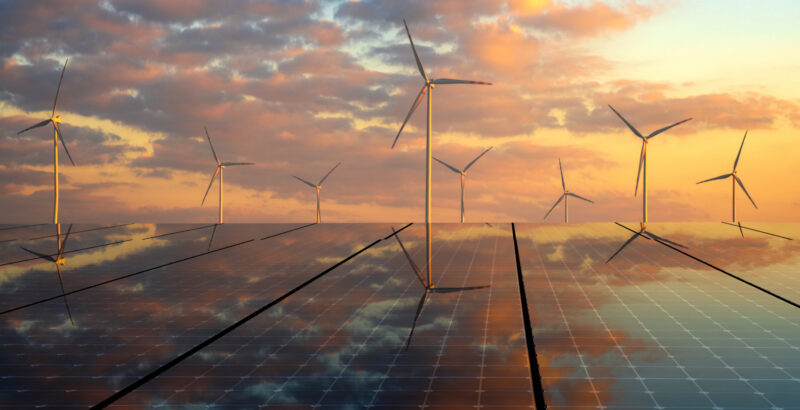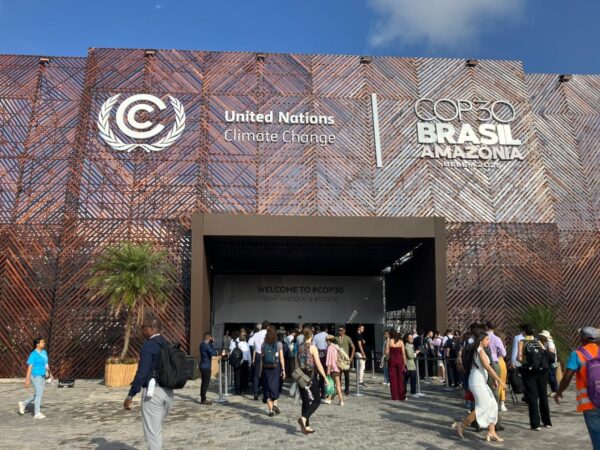Picking up the pace: 1.5°C wind and solar targets for 2030 and 2035 in key countries
1.5°C aligned wind and solar benchmarks for China, India, USA, South Africa, Germany, Indonesia, Australia, Brazil, Mexico, Türkiye and Nigeria.
Share

New analysis which delves into two game changing technologies in the climate fight – wind and solar – reveals the pace at which both need to scale in key countries to limit warming to 1.5°C. Across 11 countries that account for over 70% of current wind and solar power, the technologies need to grow five-fold by 2030 (three times faster than current yearly rates) and eight-fold by 2035 to meet global climate goals.
China has hit its 2030 target to install 1.2 TW of wind and solar capacity six years early. Maintaining this acceleration could see the country install the 4.5 TW of wind and solar needed by 2030 to limit warming to 1.5°C. While China’s carbon emissions are set to peak, wind and solar need to outpace rapidly growing electricity demand to force out large volumes of coal in the power sector.
“The record-breaking success of renewables in China has pushed the country to the verge of peak emissions. But to pass this peak and bring emissions down at the pace needed for 1.5°C, China would need to beat even its own personal best and deploy wind and solar even faster,” says lead author Dr Neil Grant of Climate Analytics.
The report by Climate Analytics and NewClimate Institute aims to guide governments as they present new climate targets following a COP28 commitment to triple renewables in line with 1.5°C by 2030. Across the 11 countries, wind has a key near-term role, providing more electricity than solar until the mid-2030s in a 1.5ºC aligned transition. By 2050, solar becomes dominant, providing around half of total electricity generation, and wind around a third.
“Wind and solar are the bread and butter of the energy transition and represent the most powerful tools in our toolbox. As countries update their climate targets, sending a strong, clear message on the central role of wind and solar could be the defining policy action in getting the world on track for 1.5°C,” says Climate Analytics CEO Bill Hare.
India has made impressive progress on wind and solar but would need more international climate finance to help them scale five-fold to over 600 GW to meet growing demand and move away coal dependence. Enhanced international cooperation, including the provision of grants and concessional finance to help mobilise private capital, is urgently needed to ensure emerging and developing economies benefit equally from the renewables rollout.
For the United States, wind and solar capacity needs to grow almost five-fold by 2030, reaching around 1400 GW of installed capacity to align with 1.5°C. The Inflation Reduction Act is working to accelerate the rollout of wind and solar, but the energy transition needs to progress even faster if the country is to meet its own target of decarbonising its power sector by 2035.
"The US needs to live up to its own promises of carbon free electricity by 2035 – a target that is generally aligned with the Paris Agreement’s goals. For the US, this would mean growing wind and solar capacity almost five-fold by 2030 to ensure fossil fuels can be fully phased out of power by 2035,” says report author Markus Hagemann of NewClimate Institute.
Germany’s 2030 targets for wind and solar are broadly where they need to be for 1.5°C. Germany has achieved ambitious deployment rates for wind and solar before and should now focus on delivering these targets. Committing to phase out coal by 2030 and fossil gas by 2035 would help ensure the country’s energy transition is Paris compatible.
“Industry stands ready to deliver the rapid roll out of wind and solar necessary to meet our climate goals. Businesses are calling on governments to set ambitions, specific and actionable targets in their NDCs and energy plans – this creates the market certainty needed to unlock investment and ensure a robust pipeline of renewable projects. That’s why today we are publishing an open letter, calling on leaders to Now Deliver Change in their upcoming NDCs,” says Louise Burrows, Head of Government Affairs, Global Renewables Alliance.
There is no single way to translate global goals to the national level. A country’s wind and solar rollout depends on a range of factors, including forecast electricity demand, the pace of fossil phase-out needed, the availability of other renewable technologies like hydropower and geothermal, and the split between wind and solar. This new analysis represents one evidence point to guide countries as they prepare new 1.5°C-aligned climate targets.











